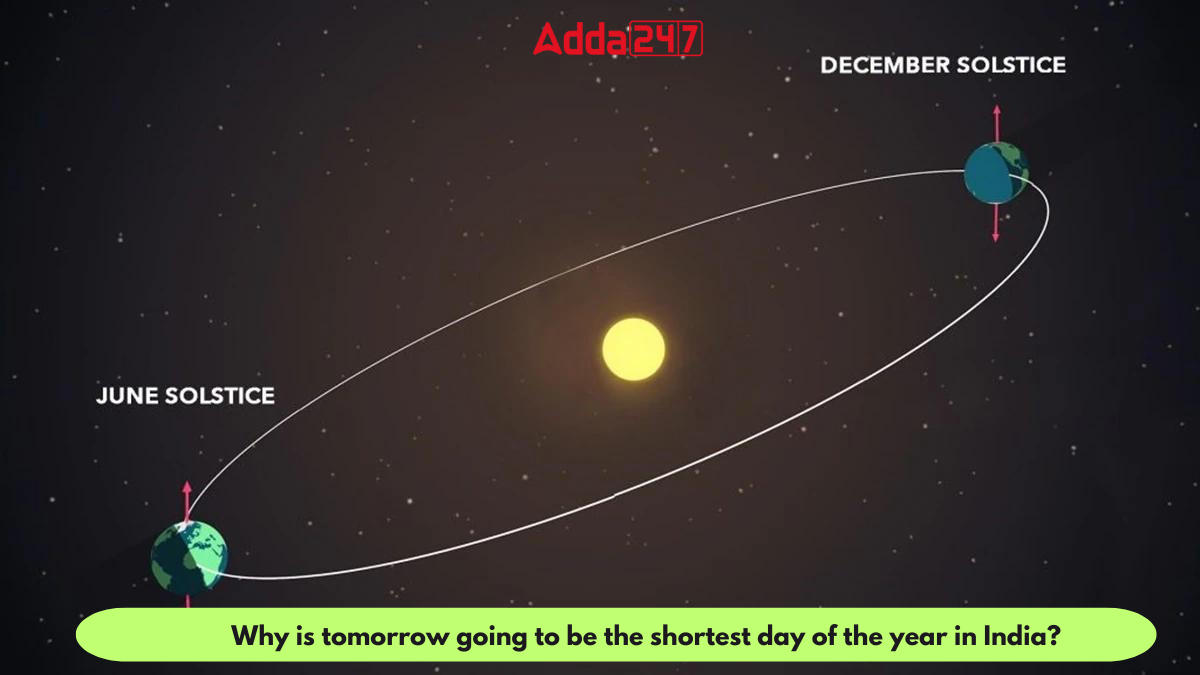
This year, the December Solstice, also known as Winter Solstice, falls in India on December 22, 2023. For some regions, it falls on December 21. The first day of astronomical spring in the Northern Hemisphere, the Winter Solstice can fall anytime from December 20 to 21. In rare cases, the winter solstice can fall on December 23. The last time the Winter Solstice fell on December 23 was in 1903. Winter Solstice 2023 falls at around 8:57 am IST on December 22. Solstices occur twice a year. They mark the beginning of astronomical summer and winter. Solstices take place around June 21 and December 21.
The winter solstice will be observed in India on December 22 at 8:57 AM. The shortest day of the year will occur in the Northern Hemisphere during the day, with roughly 7 hours and 14 minutes of daylight. Then, on December 22, Earth’s axis will be designated as the one that is furthest from the sun. This indicates that compared to the summer solstice, the winter solstice’s day is 8 hours, 49 minutes shorter.
The word solstice is derived from the Latin word ‘solstitium’, which means ‘the Sun stands still’.
Here’s why the winter solstice brings the shortest day:
- Earth’s tilt: Our planet isn’t straight up and down as it orbits the Sun. It’s tilted at an angle of 23.5 degrees. This tilt means that different parts of Earth receive direct sunlight at different times of the year.
- December tilt: During December, the Northern Hemisphere is tilted furthest away from the Sun. This results in the sun staying below the horizon for a longer period, meaning fewer hours of daylight and making it the shortest day.
- Southern Hemisphere flip: While the Northern Hemisphere experiences winter solstice, the Southern Hemisphere enjoys the summer solstice, meaning their longest day.
What is Solstice?
The Earth receives different amount of sunlight depending on the region and the time of the year. The Earth’s tilt makes one half of the world receive sunlight while the other half stays dark. The Earth’s axis tilts at 23.5 degrees because of which, one half of the world receives more sunlight and, hence, has a longer day time while the other half has a longer night.
When the tilt of the Earth is the most extreme with respect to the sun, one hemisphere has its longest day while the other hemisphere has the longest night. This phenomenon happens twice a year and it is known as solstice.
Why does Solstice occur?
Solstice takes place because of the Earth’s tilt. The Earth’s tilt makes sure that we have four different seasons. The sun-facing hemisphere experiences summer — June to August in the Northern hemisphere and December to February in the Southern hemisphere. The hemisphere that is away from the sun experiences winter.
During summer solstice in the Northern hemisphere, parts of the Arctic Circle experience 24 hours of daylight while in the Antarctic region, which is in the Southern hemisphere, there is no sunlight at all. The opposite takes place during winter solstice. The Arctic Circle gets no sunlight while the Antarctic belt gets sunlight for 24 hours.
When does Solstice occur?
Solstices occur twice a year. They mark the beginning of astronomical summer and winter. Solstices take place around June 21 and December 21. They do not occur on the same day every year because the astronomical year is 365.25 days long and we consider 365 or 366 days. Because of this reason, solstices can shift.
Solstices have been known to people for many centuries. They have inspired religious traditions throughout the world and many monuments have been built to mark the event.
Important Questions Related to Exams
Q1. When is the Winter Solstice in India?
Ans. The Winter Solstice, falling on December 22, 2023, at 8:57 AM IST, marks the first day of astronomical winter in the Northern Hemisphere. For some regions, it may fall on December 21.
Q2. How Long is the Day during the Winter Solstice?
Ans. The Northern Hemisphere experiences roughly 7 hours and 14 minutes of daylight during the Winter Solstice, making it the shortest day of the year.
Q3. Why Does the Winter Solstice Bring the Shortest Day?
Ans. Earth’s tilt, at an angle of 23.5 degrees, is the key. In December, the Northern Hemisphere is tilted furthest away from the Sun, resulting in fewer daylight hours.
Q4. What Does “Solstice” Mean?
Ans. The term “solstice” is derived from the Latin word ‘solstitium,’ meaning ‘the Sun stands still.’
Q5. When Did the Winter Solstice Last Fall on December 23?
Ans. The Winter Solstice last fell on December 23 in 1903. It usually occurs around December 21 but can vary between December 20 and 21.



No comments:
Post a Comment